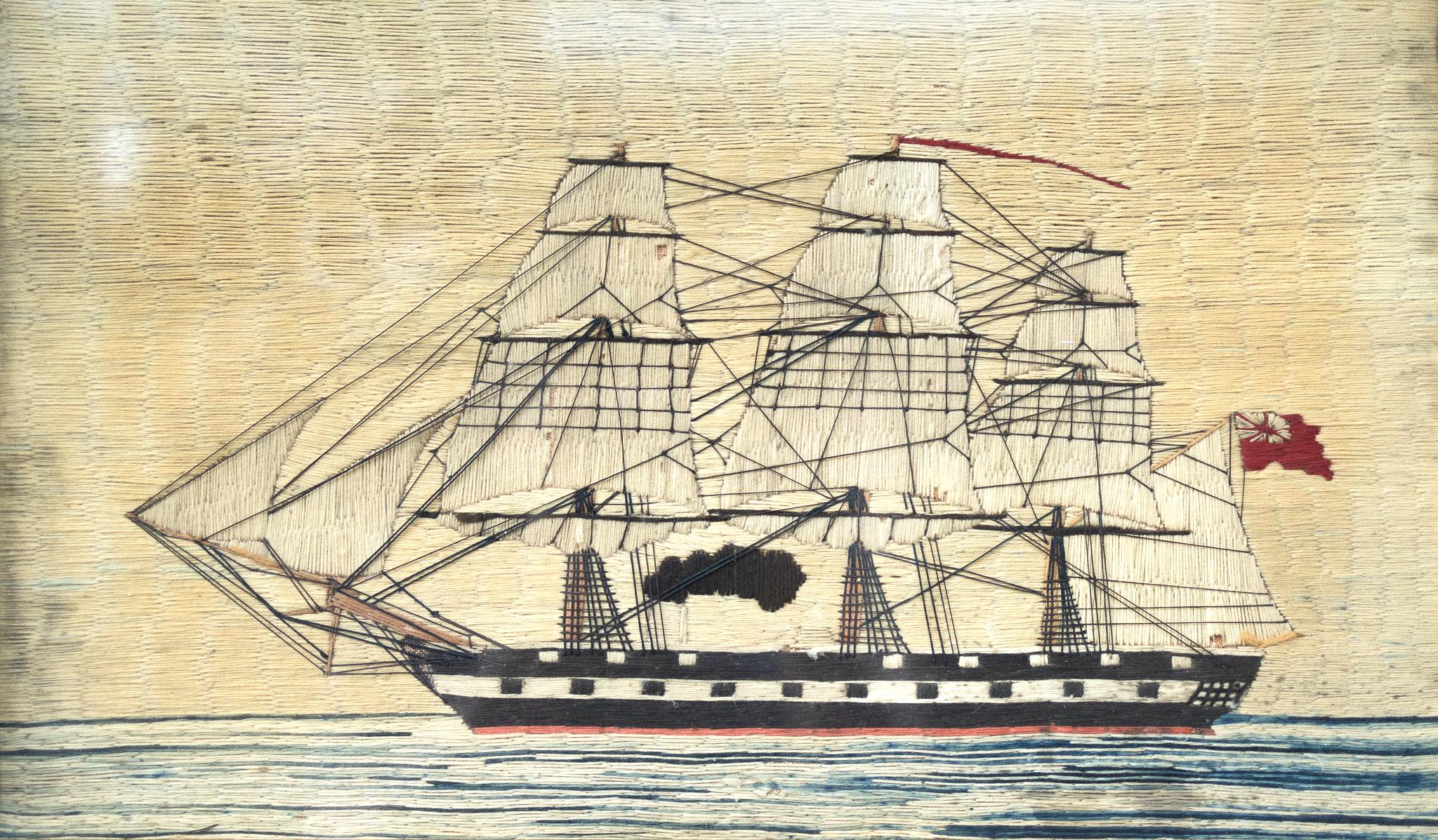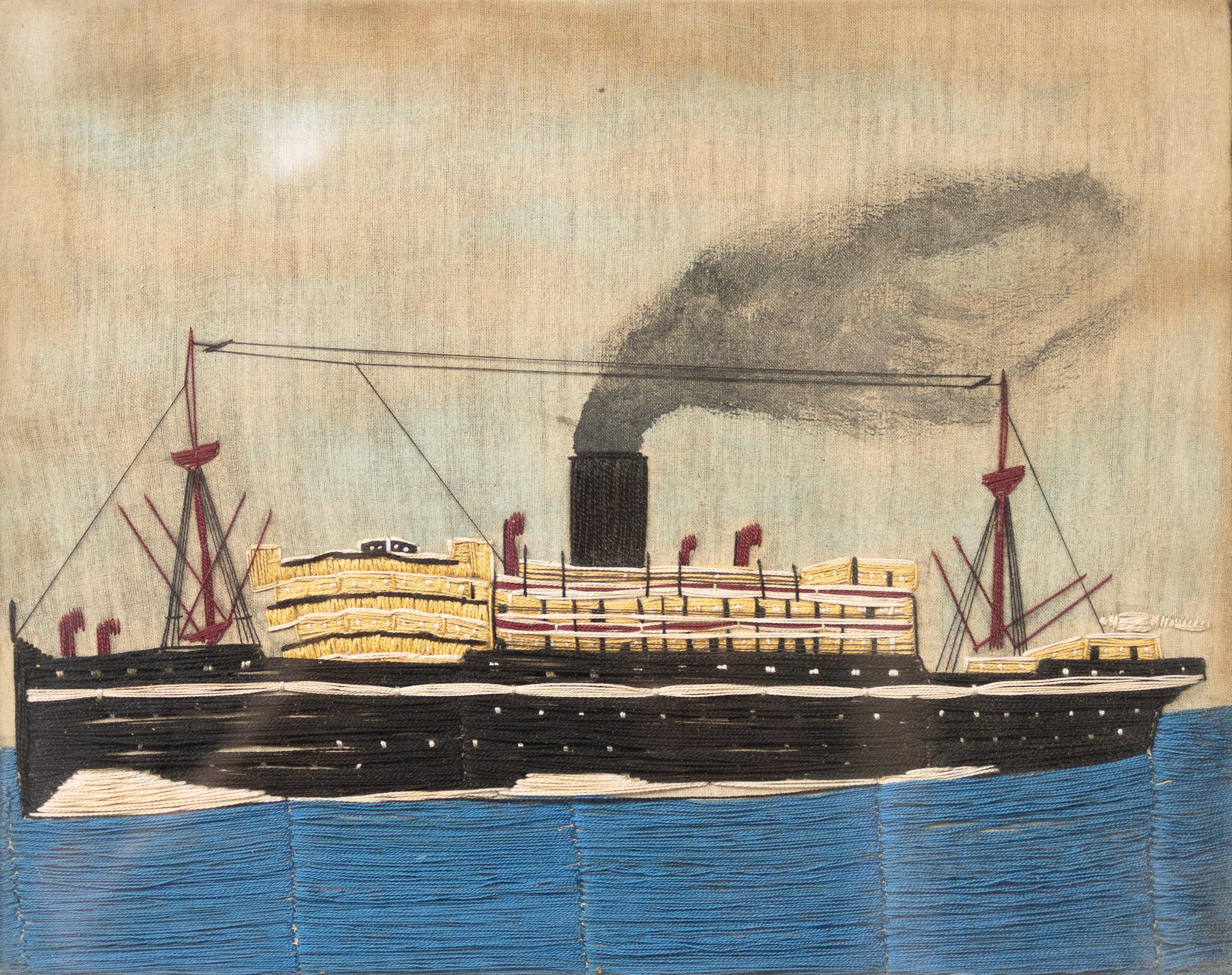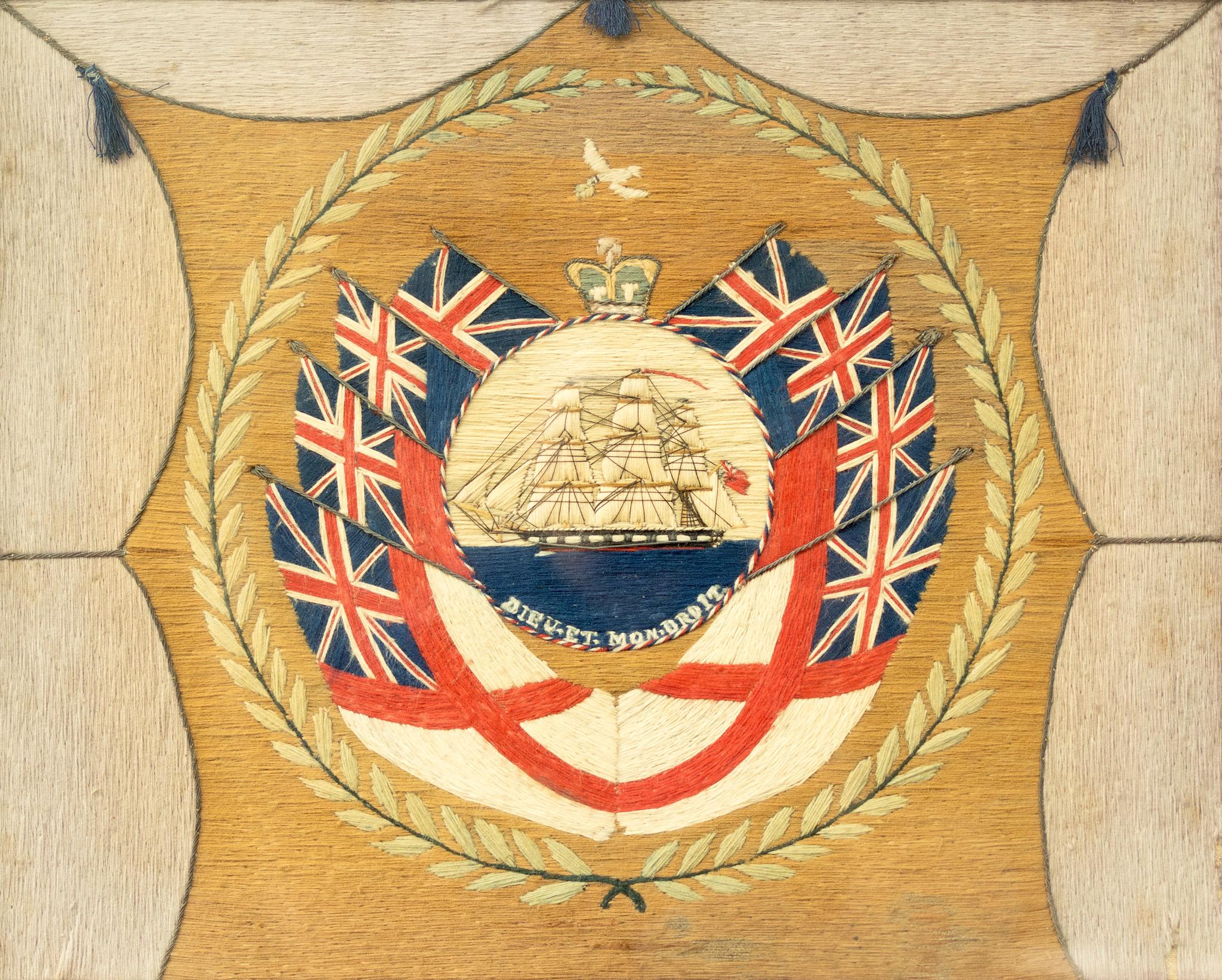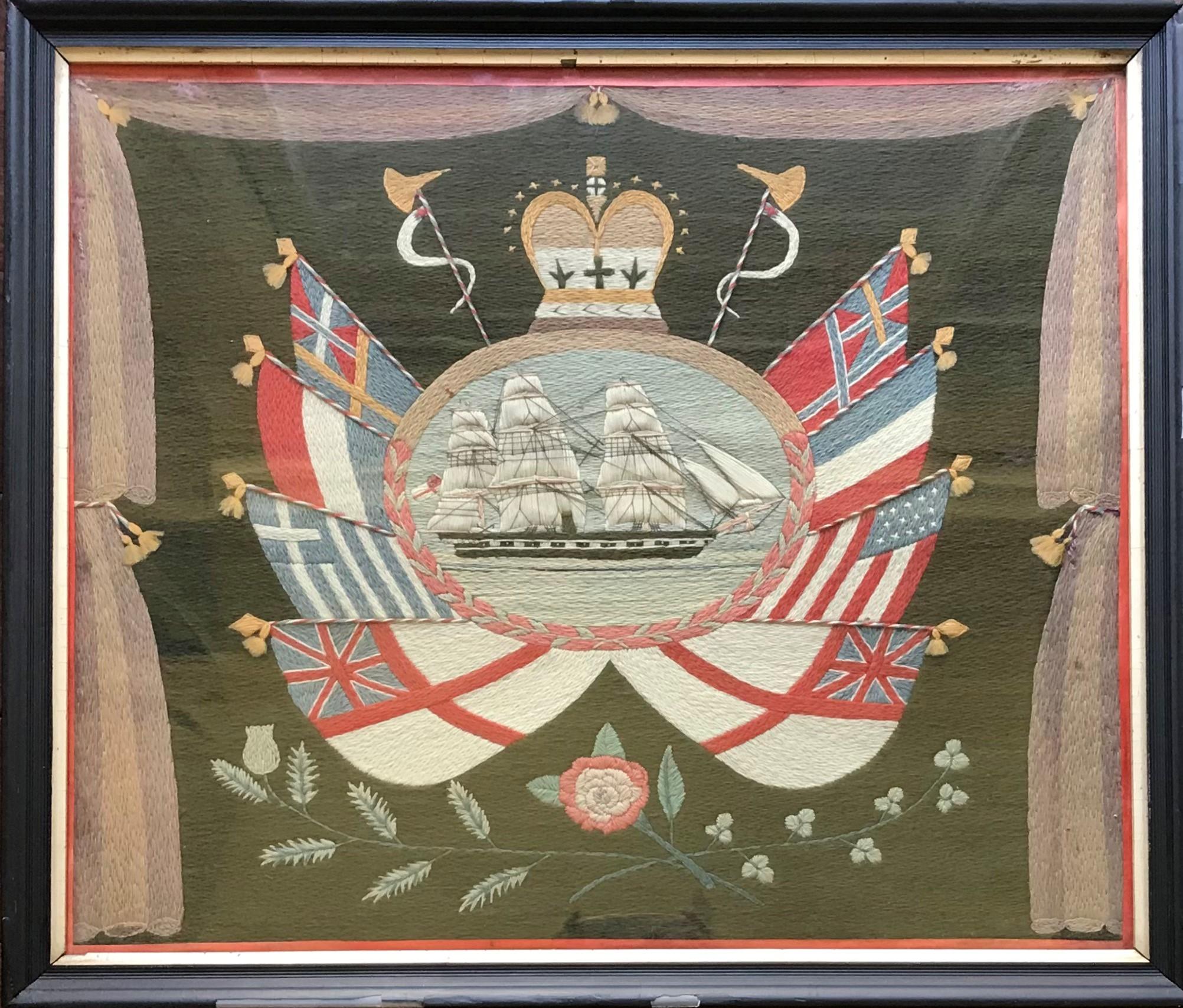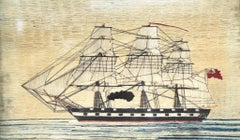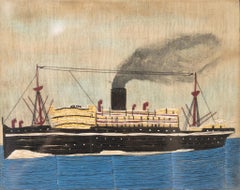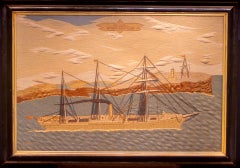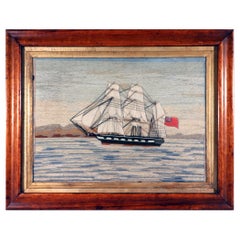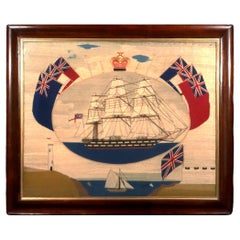Items Similar to British Woolie featuring Union Jack British Flag
Want more images or videos?
Request additional images or videos from the seller
1 of 4
UnknownBritish Woolie featuring Union Jack British Flag1870
1870
$4,500
£3,341.01
€3,893.20
CA$6,247.45
A$6,988.17
CHF 3,636.68
MX$86,026.75
NOK 46,266.16
SEK 43,406.78
DKK 29,047.13
Shipping
Retrieving quote...The 1stDibs Promise:
Authenticity Guarantee,
Money-Back Guarantee,
24-Hour Cancellation
About the Item
19th Century Woolie crafted by British Sailor with Japanese flag Insigne
1863 British Steam Boat Entering in Japan Harbor
- Creation Year:1870
- Dimensions:Height: 14 in (35.56 cm)Width: 21 in (53.34 cm)
- Medium:
- Movement & Style:
- Period:
- Condition:
- Gallery Location:Austin, TX
- Reference Number:Seller: JS236391stDibs: LU117127703542
About the Seller
5.0
Gold Seller
Premium sellers maintaining a 4.3+ rating and 24-hour response times
Established in 1964
1stDibs seller since 2019
125 sales on 1stDibs
Typical response time: <1 hour
- ShippingRetrieving quote...Shipping from: Austin, TX
- Return Policy
Authenticity Guarantee
In the unlikely event there’s an issue with an item’s authenticity, contact us within 1 year for a full refund. DetailsMoney-Back Guarantee
If your item is not as described, is damaged in transit, or does not arrive, contact us within 7 days for a full refund. Details24-Hour Cancellation
You have a 24-hour grace period in which to reconsider your purchase, with no questions asked.Vetted Professional Sellers
Our world-class sellers must adhere to strict standards for service and quality, maintaining the integrity of our listings.Price-Match Guarantee
If you find that a seller listed the same item for a lower price elsewhere, we’ll match it.Trusted Global Delivery
Our best-in-class carrier network provides specialized shipping options worldwide, including custom delivery.More From This Seller
View All19th Century British Steamboat Woolie
Located in Austin, TX
19th British Steamboat with lighthouse featuring English St. George Flag at the Bow and Stern of the ship and a Union Jack Flag at the Stern of the ship.
Frame is Birds Eye Maple
Category
Mid-19th Century Folk Art More Art
Materials
Wool
British Woolie in Maple Frame
Located in Austin, TX
"Sailboat in a Maple Frame" - British Woolie, 1870
Wool Embroidery
12 x 19.5 inches
Framed 14 x 22 inches
19th Century British Woolie in Maple Frame fe...
Category
Late 19th Century Folk Art More Art
Materials
Wool
19th Century Steamboat British Woolie
Located in Austin, TX
An original 19th Century Steamboat Woolie
12" x 15.5"
Medium: wool
Category
1860s Folk Art More Art
Materials
Wool
19th Century British Woolie "Dieu Et Mon Droit"
Located in Austin, TX
19th Century handcrafted Woolie featuring sailboat bordered by British flags with the motto of the British monarch Dieu et Mon Droit, (God and my rig...
Category
Mid-19th Century Folk Art More Art
Materials
Wool
19th Century Woolie with Curtain Bordered Ship
Located in Austin, TX
19th Century British Woolie
featuring a curtain border and floral accents
Medium is wool and is considered traditional folk art made by British Royal ...
Category
Mid-19th Century Folk Art More Art
Materials
Wool
19th Century Woolie Featuring Sailboat with Saint George British Flag
Located in Austin, TX
19th Century British Woolie featuring Sailboat with red St. George British Flag
Medium is Wool
Framed
In good condition
Category
1860s Folk Art More Art
Materials
Wool
You May Also Like
AUSTRALASIAN Off South Sydney Heads
Located in Costa Mesa, CA
Proud Liner of the Aberdeen White Star Line, AUSTRALASIAN carried emigrants and first-class passengers to Australia and South Asia in the late 1880s & 1890s. This colorful period woo...
Category
1880s Folk Art Mixed Media
Materials
Wool, Dye
British Sailor's Woolwork of a Royal Navy Ship with Red Ensign
Located in Downingtown, PA
British Sailor's Woolwork of a Royal Navy Ship
circa 1765
The sailor's woolwork, also known as a woolie, depicts a port side view of a ...
Category
Antique Mid-19th Century English Victorian Nautical Objects
Materials
Wool
British Sailor's Woolwork of Second Rate Royal Navy Ship with Flag Surround
Located in Downingtown, PA
British Sailor's Woolwork of Second Rate Royal Navy Ship with Flag Surround,
Circa 1875
The sailor's woolwork or woolie depicts a starboard Second Rate Royal Navy ship under full sa...
Category
Antique 1870s English Folk Art Nautical Objects
Materials
Wool
British Sailor's Woolwork of HMS Victor Emanuel with Red and White Ensign Border
Located in Downingtown, PA
British Sailor's Woolwork of HMS Victor Emanuel with Red and White Ensign Border,
Named after Victor Emanuel, King of Sardinia (also known as Piedmont-Sardinia) and future King of It...
Category
Antique 1870s English Folk Art Nautical Objects
Materials
Wool
British Sailor's Woolwork of a Royal Navy Second Rate Battleship
Located in Downingtown, PA
British Sailor's Woolwork of a Royal Navy Second Rate Battleship,
Circa 1875
The charming simple sailor's woolie depicts a starboard side view of a Royal Navy second rate battleship...
Category
Antique 1870s English Folk Art Nautical Objects
Materials
Wool
Wool Work 'Woolie' Needlepoint Embroidery of the British Ship Amelia
Located in Palm Beach, FL
Large antique needlepoint of the British sailing ship Amelia hand crafted in wool, popularly known as woolies, crafted with ambitious detail. Pres...
Category
Late 19th Century Victorian More Art
Materials
Wool

